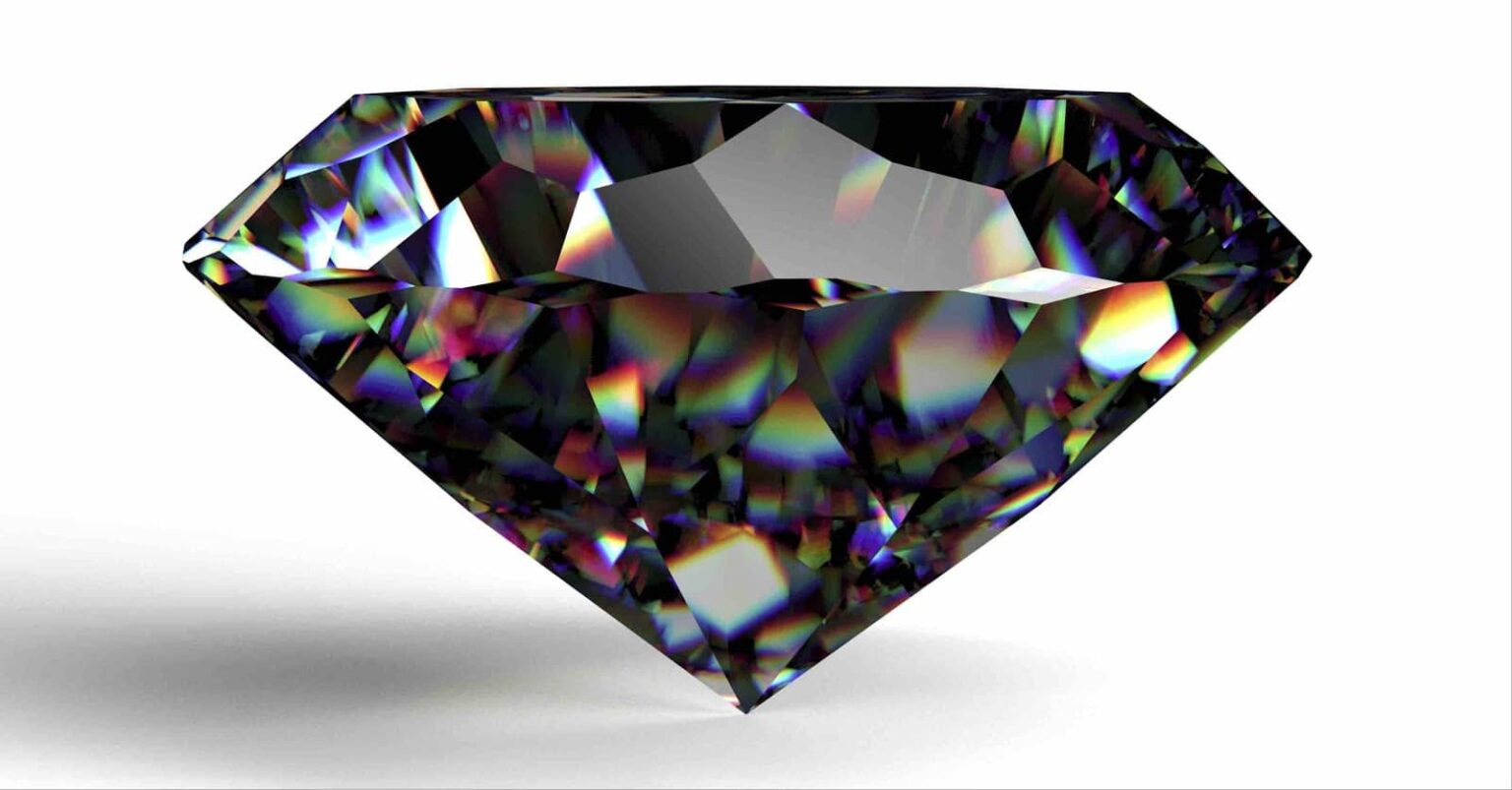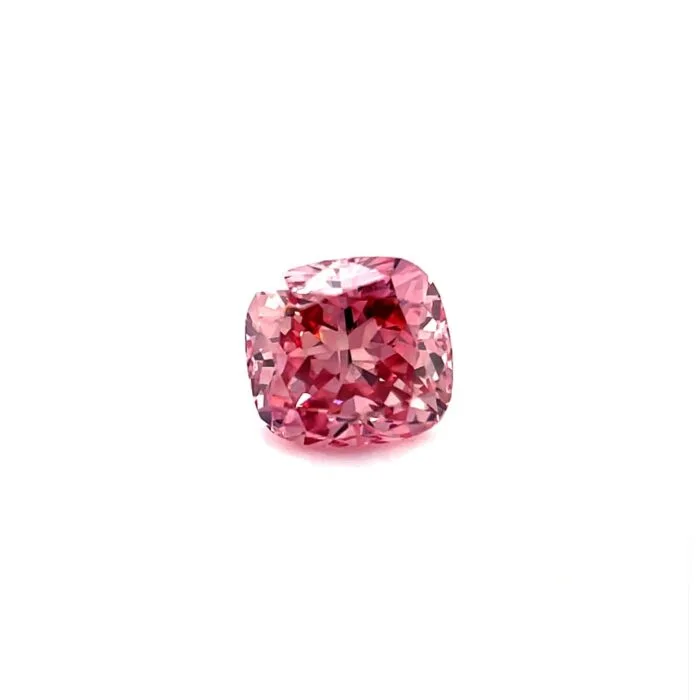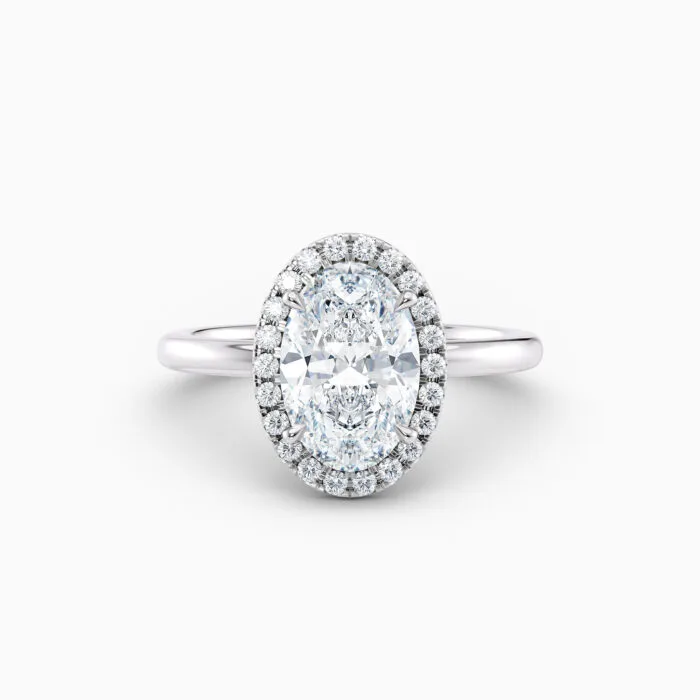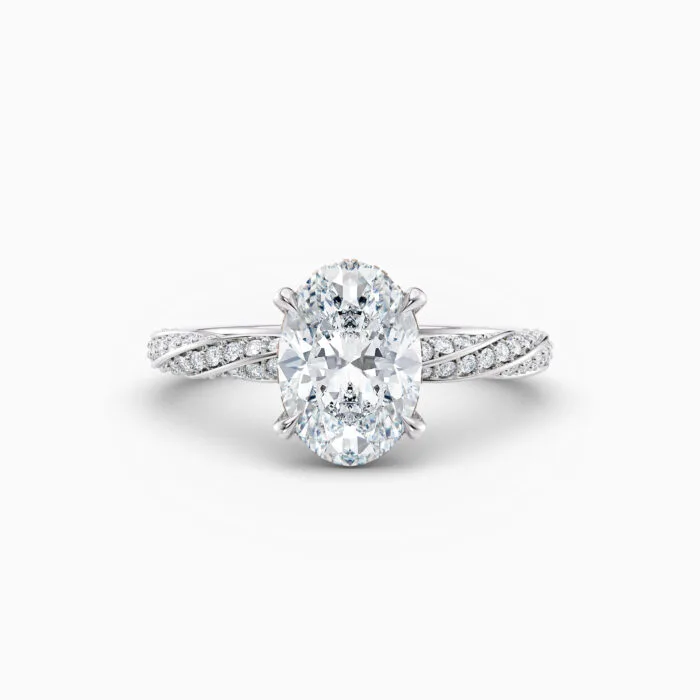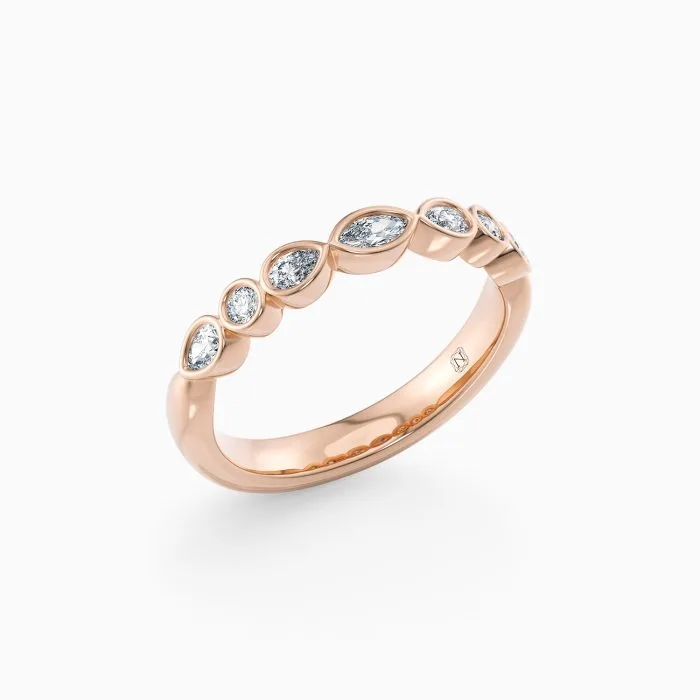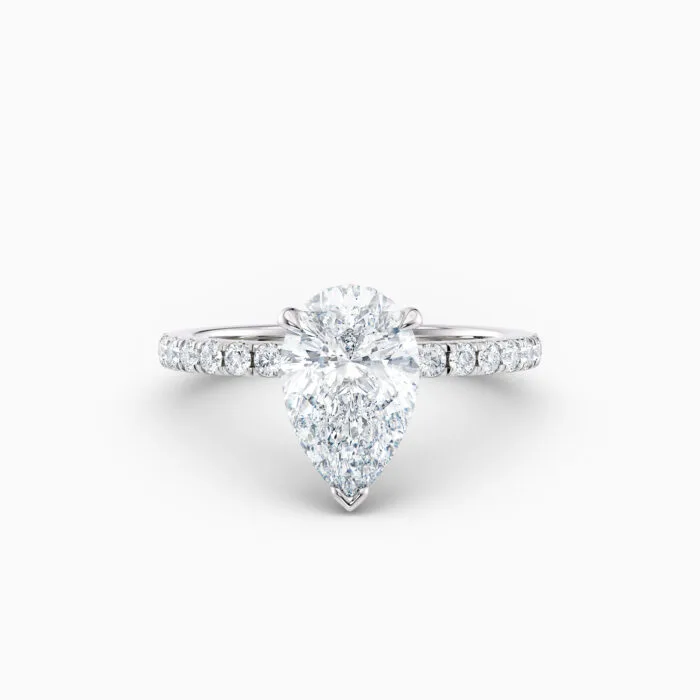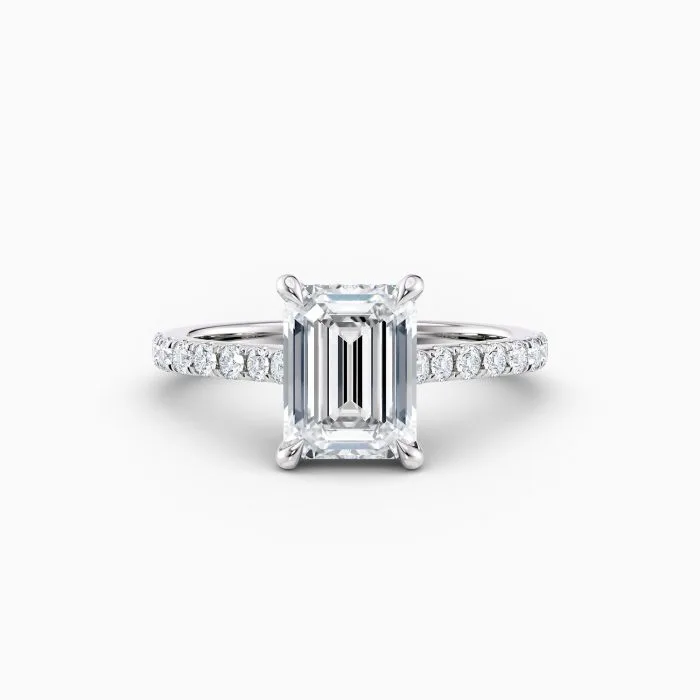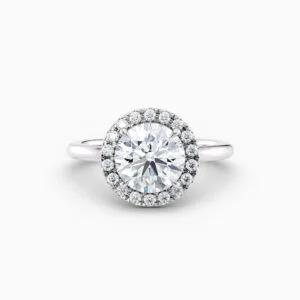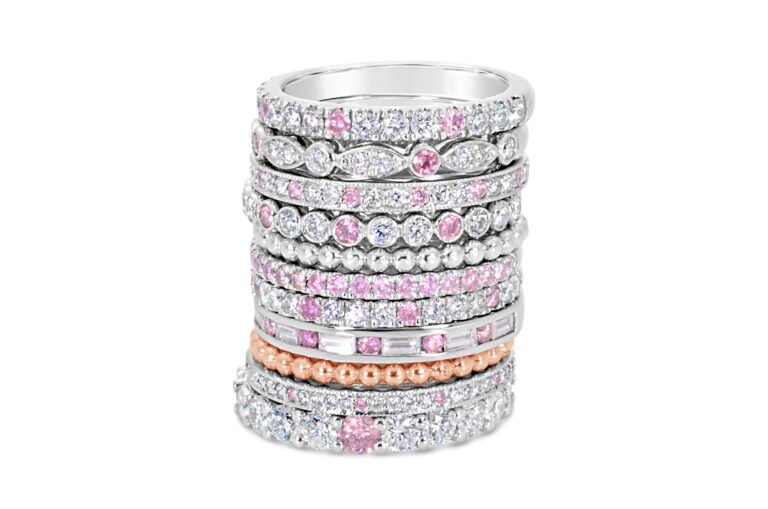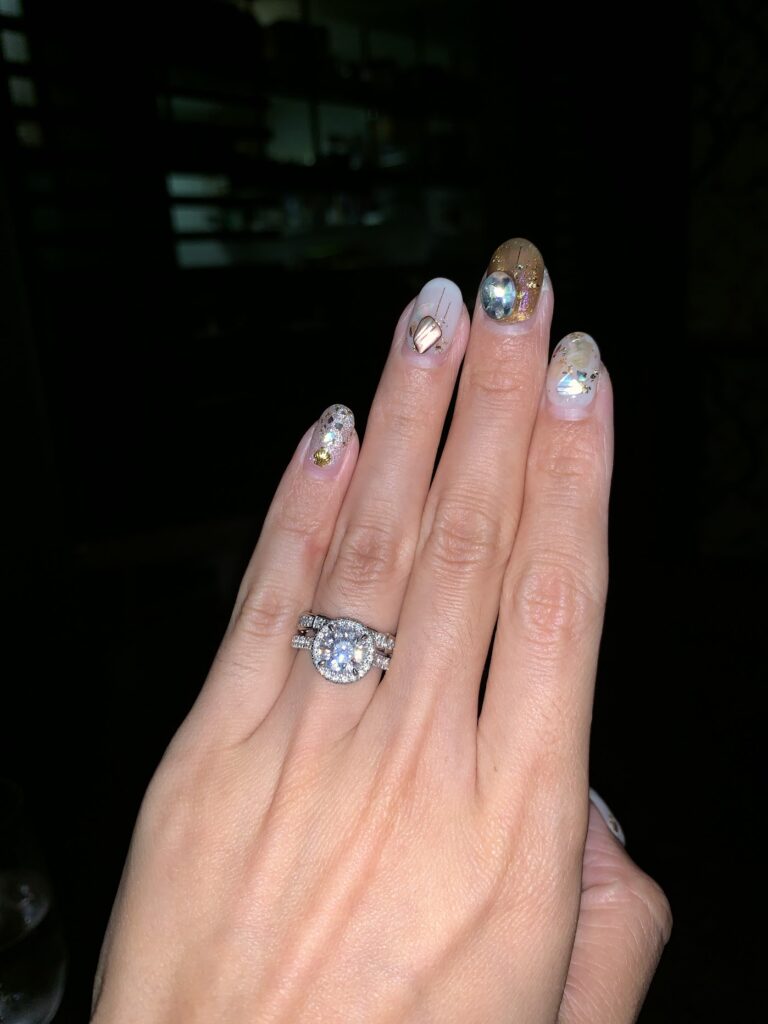Black diamonds, initially known as carbonado, are rare polycrystalline diamonds that originate from Brazil and the Central African Republic.
Unlike traditional clear diamonds, which are single crystals, black diamonds are polycrystalline, meaning they consist of multiple diamond crystals fused together in a dense, compact structure.
The Rarity and Distinctiveness of Black Diamonds
Black diamonds, like all coloured diamonds, are extremely rare and distinctive with just one in every 10,000 diamonds mined being coloured.
Black diamonds are typically a distinctive black or dark grey in colour, and get their distinctive colour from numerous inclusions of minuscule mineral particles such as magnetite, haematite and graphite.
While white diamonds sparkle under the light, black diamonds are completely opaque and absorb light rather than reflect it, providing the best diamonds with a dark metallic caviar hue.
Unlike pink, yellow or blue diamonds, the natural black diamond has no change in hue and shade, as a result, the black diamond has only one colour grade according to the GIA, “Fancy black”.
As they are so hard, natural black diamonds take significantly longer time to cut, up to five times as long in many cases and this further adds to the value of the diamond.
This labour-intensive process, combined with their rarity, significantly enhances their value. The finest black diamonds exhibit a smooth, even colour with a subtle metallic sheen, making them particularly desirable for high-end jewellery.
From industrial tools to high-end jewellery
Historically, black diamonds have been overlooked in the world of jewellery. The opaque dark appearance and lack of brilliance made them less desirable compared to the sparkling and shining white diamonds.
Because of their unattractive use in fashion and jewellery and until recently their primary purpose has been industrial with the carbonado diamond used in commercial drills. Their hard and compact nature makes their cutting tools last longer and require less maintenance.
In recent years, however, the prominence of black diamonds in use as jewellery pieces has increased significantly and it is now a much sought-after and fashionable stone.
Thanks to evolving fashion trends, open-mindedness and innovative jewellery designs that developed over time, the perception of these once-neglected stones has shifted, and these diamonds have become highly coveted in the luxury market.
Designers have embraced their bold, unconventional beauty, pairing them with white diamonds, gold, and platinum to create striking contrast pieces.
The mystery of the black diamond
One of the most famous black diamonds, the Black Orloff or the Eye of Brahma, weighs 67ct and was sold for auction at Sotheby’s in 1995 for US$1.5 million.
It has served as the benchmark of natural black diamond, not only due to its large size and unique gunmetal colour but also its well-known mystery and its rumour to carry a curse. It is claimed that the Black Orloff originated from India, and it was stolen from the Brahma statue head in Pondicherry.
The current trend of black diamonds
Black diamonds also provide an instant stand-out because of their uniqueness. Black diamonds have gained more popularity and become a trend among many celebrities and young couples. Their neutral yet bold aesthetic makes them versatile and suitable for both edgy, modern designs and classic, timeless pieces.
Pop culture also increased the popularity of dark diamonds in recent years. In the final scene of the Sex and the City 2 film, Mr. Big captured the heart of Carrie Bradshaw and viewers with a five-carat black diamond ring, saying, “Because you are not like anyone else.”
Most recently, black diamonds still captured the public eye with celebrities wearing them on the red carpet. Camila Cabello made a statement at the 2024 VMAs in a dramatic stack of natural black diamonds. Beyoncé elevated their prestige at the 2014 Met Gala, while Lady Gaga brought avant-garde glamour with black diamond accents at the 2018 Grammy Awards.
What if I want black diamond jewellery too? — Treated black diamond is your choice
If you are the type of bride who wants to break the tradition and showcase your own style, you may want to consider an edgy black diamond ring.
While natural black diamond is too rare and costly, treated black diamond, which are less expensive at a 50-80% lower cost compared to their natural counterparts, dominated the mainstream market.
It is an advantage that treated black diamonds are less expensive than colourless or fancy-coloured diamonds on the market.
Treated black diamonds mimic the opaque, light-absorbing appearance of natural black diamonds. Their consistent colour and metallic sheen make them popular for edgy, modern jewellery, such as engagement rings or statement necklaces.
A treated black diamond is a diamond that receives high temperature high pressure(HTHP) treatment to turn it black. They have a similar look to natural black diamonds but are less costly.
Other techniques include irradiation (bombarding the diamond with high-energy particles) and surface coating (applying a thin black film), though these methods may compromise long-term durability.
However, buyers should be aware of the following:
Coatings can chip over time, and irradiated stones may fade with prolonged exposure to heat or light.
They’re much more susceptible to damage than their colorless counterparts. This is because black diamonds are made up of hundreds of tiny fractures.
When reputable authorities like GIA certify treated diamonds, explicitly labeling them as “treated” to ensure transparency.
Because of black diamonds’ special structure and heavy inclusions, they cannot be graded for the traditional 4Cs by the GIA. Instead, GIA issues a Colored Diamond Identification and Origin Report, which confirms whether a black diamond is natural or treated.
